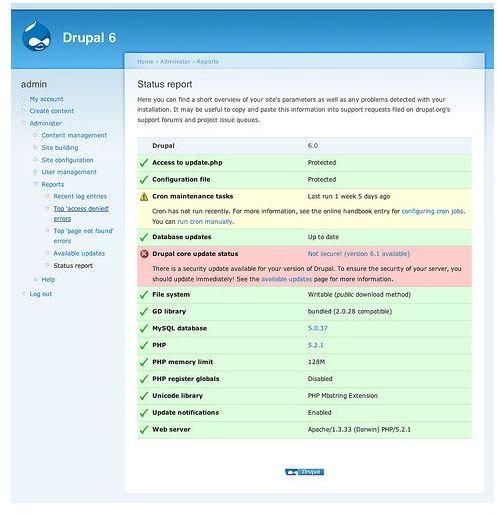Better Project Status Tracking: Top 10 Tips for Project Teams
1. Simplicity
The basic rule in project status tracking is never to underestimate the power of simplicity. A status report is essential irrespective of the size of the project, but the best of reports are those kept simple, direct, and concise.
The best report is one that:
- Collects only the basic required information, leaving the analysis or computation part to the person collecting the report.
- Avoids inclusion of information that might only sometimes be required, and which can easily be obtained through follow-up.
- Does not ask for irrelevant information.
Filling up a lengthy and complicated form on a daily basis eats into the productivity and work schedules of the team members, and this usually prompts them to file something for the sake of it, or avoid filing the report altogether.
Image Credit: flickr.com/Peter Morville
2. Flexibility
The move to standardization is a double-edged sword. It allows for seamless workflow and analysis, but does not consider the genuine needs for unanticipated exceptions, or crises.
The project status tracking system needs to focus on standardized and consistent information rather than a standardized project tracking form or method. The flexibility to file status report via email, phone, instant messaging or any other means, ensures timely filing of the report, whereas insistence of any particular format or media ensures delays and holds up the process. For instance, a team member reluctant to speak to the manager over the phone regarding some past conflict will invariably try to avoid calling in the report, or wait until the last possible minute. The same member might readily file reports through emails promptly.
A good project status tracking also plans and allows for alternative means of reporting, as the circumstances dictate. This could mean a subordinate without access to the standard email form making the report over the telephone when the team leader is unavailable, an out of turn report filed due to certain exigencies, and the like. The key is, however, to keep such alternative forms of reporting to the minimum, ensuring the process is returned to routine as quickly as possible.
In short, a good project status tracking system makes filing reports easy for the team members rather than trying to make analysis easy for the project manager.
3. Contingencies
Good project status tracking systems are flexible. The report serves to support the project. Some managers overlook this basic fact and treat the report as an end in itself. Insistence on prompt reports have lead to critical hold up of the actual project as team members try hard to complete their reports before the deadline!
A good project status tracking system remains flexible enough to understand special contingencies such as an unexpected shutdown that might delay or omit one particular report, a day with no activity that does not require a report, or a work breakdown structure that requires a different reporting system and other special situations.
4. Collecting Relevant Information
A cardinal rule on how to set up a good project status tracking system

is to gather all information required to understand whether the work progress is on schedule and complies with set standards. A good system tracks, along with causes for exceptions:
- Tasks that take longer than the schedule permits
- Tasks that exceed the budget
- Completed tasks that do not meet deliverables
Image Credit: flickr.com/KentBye
5. Analysis and Follow-Up
Timely availability of information is useless until such information finds constructive use. The onus is on the project manager to analyze the information in the project status tracking report in terms of the impact on the project immediately. One good way of analysis is to maintain a master list of schedules, quality standards, and deliverables, and ascertain the extent of compliance in each report. The project manager also needs to make arrangements for any corrective actions.
Large products with simultaneous processes entail collecting and evaluating multiple status tracking reports. Use Excel in analyzing such reports, follow up on additional information, provide feedback, and taking the necessary actions without delay for all such reports is a critical project activity, and very often underestimated. Errors and slippage have a tendency to compound rapidly, and not taking timely actions causes serious time and cost overruns.
6. Feedback
Most managers fail to provide feedback to the team members completing the tracking form. A regular system of feedback in terms of how the information contained in the report matches up with the expectations, information or tips to solve issues mentioned in the report, and the like, converts the feedback system into a responsive and interactive mechanism that boosts communications.
Team members are more likely to provide accurate and timely information when they find the information they provided put to good use.
7. Record Keeping
A good project status tracking system deals with the issues in the report on a real time basis, and devises an efficient record management system to capture key and store key information for later use while deleting non-essential information. Information required for later use includes expenses, stage of completion of various tasks, etc. Capturing such information from the status reports for other functions or departments such as finance, inventory control and others, eliminates duplicity of efforts, saves time, and leads to overall efficiency.
8. Equanimity
Successful maintenance of a project status tracking system requires handling all information in an objective and unemotional manner. Making judgmental evaluations or emotional reactions to bad news, or the practice of shooting the messenger cause team members to take evasive actions or become less forthcoming in conveying bad news.
A good approach is to appreciate the team member and encourage them to remain honest and report both good and bad news alike.
9. On-Going Activity
A project status tracking system is an on-going activity that needs set up and implementation at the start of the project, to last until the completion of the project. The best system is one that remains fully integrated as a routine operational component of the project.
10. Staying Proactive
Finally, the best form of control is proactive. Providing the team with full information of the requirements, the budgeted costs, and schedule information for the assigned tasks, make team members understand the expectations, and this consciously or unconsciously results in better performance.
Reference
Alexander, Jake. How to Manage a Small Project. Retrieved from https://www.managingsmallprojects.com/implement-project-status-tracking.html
